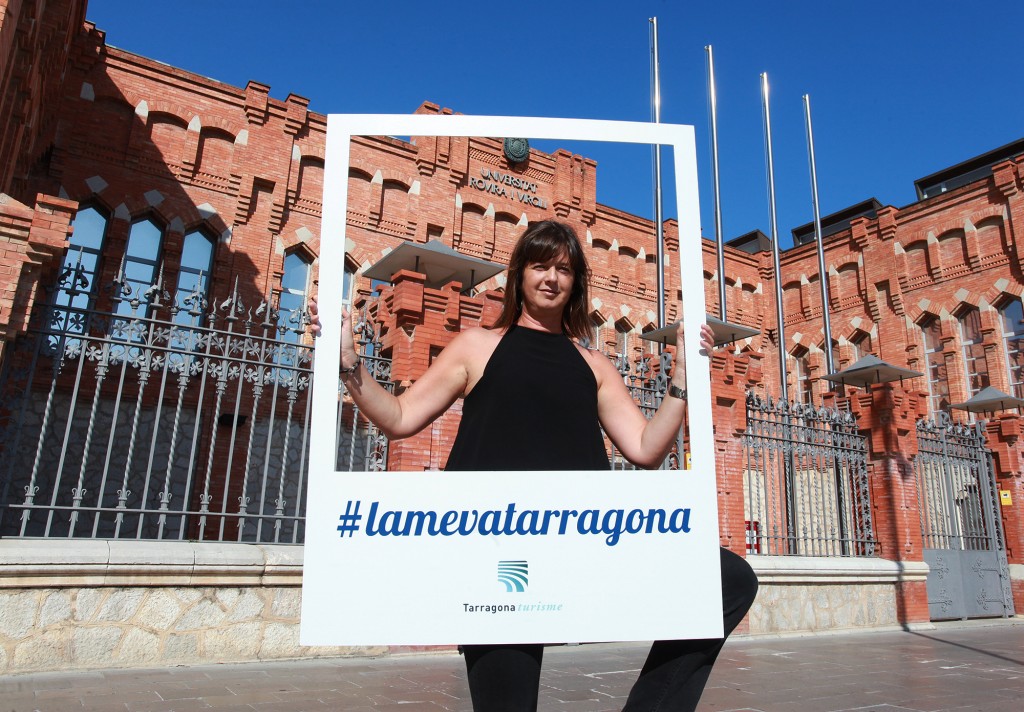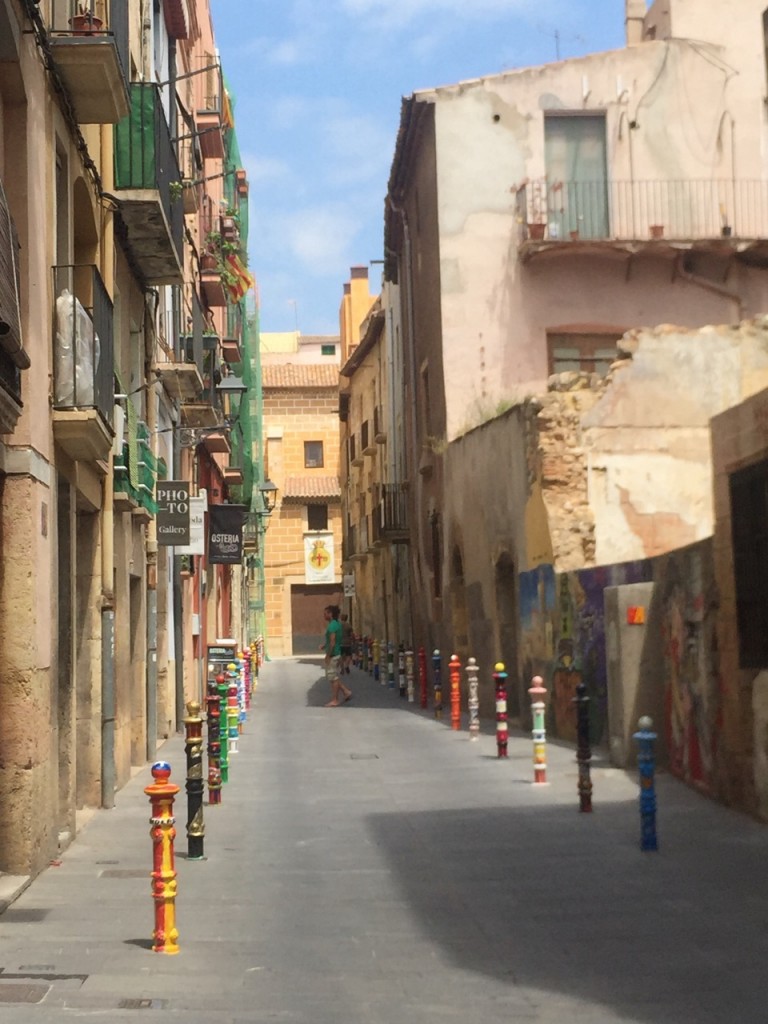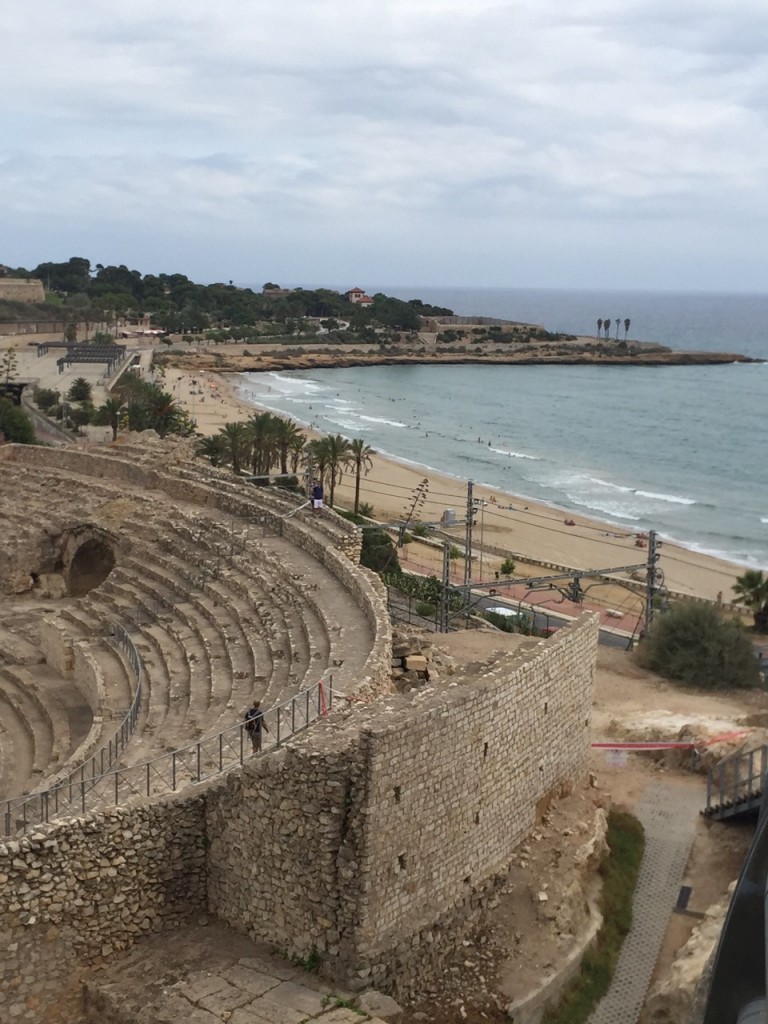Mar Camacho was born in Valls, but moved to Tarragona after a short stay in Paris, where she worked in Unesco’s Department of Education. She’s back now to the imperial Tarraco and its Universitat Rovira i Virgili (URV), where she practises as Doctor in Educational Technology and teacher at the Department of Pedagogy of the School of Education. Despite the fact that Mar was raised in Valls, Alt Camp’s capital city, she feels now like any other Tarragona citizen, and makes the most of the city by taking part in a great number of unmissable local events.
Today, Mar is with us for a short tour round the city, during which she will tell us about three spots of #lamevatarragona (her Tarragona) that are particularly significant to her.
The first location she has picked is Carrer Comte “also known as Pilon’s Street. It is a very important street to me, firstly because of its location, as it belongs to the Part Alta area, it is perpendicular to Cavallers Street, and I usually walk around here to take my kids to the Music Conservatory. This is a very family-friendly street, quite busy. You can always hear some music, and I think it has this sort of cultural and musical meaning to it, which is very enriching to our city. Carrer Comte has 75 metal bollards that anyone willing to do so can paint once a year (on Sant Agapito’s day). It is therefore an open street, which encourages people to get involved. On the other hand, I think it is a key symbol for the city for creativity, talent and imagination development. Besides, it just by Cavallers Street, which has all those majestic buildings and that used to be very important during the Middle Ages. To me, it is a special place due to its cultural approach. The local “IgersTGN” Instagram group meet up here once a year and paint one of the bollards, and so despite not being one of the most well-known streets in the city, it has that extra meaning and must be therefore recognised“.
Her second choice goes from Rambla Vella’s beginning and goes all the way down the train station, and provides stunning views of the city and its relation to the sea. “We’ve got the Roman Amphitheatre on the left, and the Port and some of Serrallo’s buildings on the right. Every time someone related to the University or a friend comes to visit the city, we walk or drive down and then back up the road, because I reckon it provides some pretty amazing views. On the one hand, you’ve got part of the Tarraco Romana, its history, and all that was produced so many centuries ago, and on the other hand, you can see the Port thanks to the city’s projection towards the sea, which should always be promoted, and the train station, etc. All in all, it projects the city’s opening to the world, thanks mainly to the sea”.
The third picture Mar provides takes us to a very specific place in Praça del Rei: “I have taken Augustus’ sculpture facing the sea as a symbol. This plaza homes Tarragona’s archaeological remains, but it also graphically depicts the city’s lifestyle, with bars, terraces, food, and the fact that you can go everywhere on foot, which is something we specially appreciate here in Tarragona. The Roman Praetorium, the two churches and, above all, the activity that takes place round Plaça del Fòrum and Carrer Santa Anna, plus all the cultural celebrations due for the Holy Week, which turns this square into one of the most important in Tarragona. It is a key meeting point in the Part Alta”.
The #lamevatarragona tour with Mar ends at the Rectorate Building of the URV, the old Escorxador (slaughterhouse). “It is a very emblematic building in Tarragona, located in the Part Alta, near the Cathedral and at the top of an elevated area. I was actually one of the first class that got an Anglo-German degree in Universitat Rovira i Virgili. My first connection with it therefore, comes as a student and then, even though I had a professional break outside the university, I came back as a teacher in 2006 in the field of the Education Technology in the School of Education. That’s where I work nowadays as a lecturer in everything related to education technology. To me, being able to work here after having left in the first place makes me feel like at home. And I believe that, over the years, this university has become key to the city, a crucial mainstay, which has been able to describe its own identity, very different from other Catalan universities. I think that’s the key to its success. URV has a great impact in scientific development and is known all over the world. If you go abroad though, people struggle with its name and it’s very hard for them to understand and pronounce. What we’re trying to do is to boast its name and feel proud about being part of it after so many years”.
Text and translation: Artur Santos (@artur_1983 on Twitter)
Pictures: Pere Toda (@ptodaserra on Instagram)







